Paradise cost: the Pacific islands changing the future of tourism
New push to attract visitors focuses on environment and culture, as experts call for better monitoring of sustainability pledges
T he resort lies on the fringes of one of the world’s largest barrier reefs. Powered by solar energy, in an effort to reduce its carbon footprint, there are no air conditioners or pools. Most food is grown in its gardens or fished from the sea, and all the employees are hired from local villages. This is Nukubati on the north coast of Fiji’s Vanua Levu island and at the forefront of a growing movement to change Pacific tourism.
“Our aim is really to improve our environment rather than extract from it,” says Nukubati’s director, Jenny Leewai Bourke. Nukubati is a member of Duavata, a collective of Fijian tourism businesses who say their industry should enhance the environment and cultural heritage. But the issue is complicated.
Pacific island countries – among the most vulnerable in the world to the climate crisis – are wrestling with how to balance the environmental and cultural impact of tourism with economic need. There is no enforceable, region-wide agreement on sustainable practices, just a patchwork of guidelines and initiatives. Tourism, the backbone of many island economies, has begun to rebound from devastation levelled by the Covid pandemic. The influx of visitors has prompted calls for change.
“We must demand a rebellion against business as usual,” the former director of tourism for Vanuatu Jerry Spooner says of mass tourism. “It is imperative that we consider how our travel impacts destinations and Indigenous communities.”
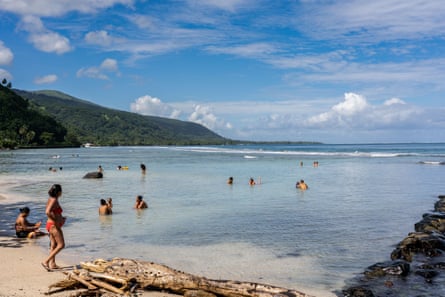
Across the region, new tourism models are emerging. Vanuatu and Cook Islands are promoting “regenerative” tourism while French Polynesia pushes a “slow’’ tourism model. Bora Bora, an island within the French territory, has put limits on arrivals to preserve its way of life. Palau, an archipelago in the western Pacific Ocean, asks visitors to sign a pledge to act in an ecologically responsible way.
Yet experts say a lack of monitoring to track impact, weak governance and limited resources hold Pacific tourism back from making environmental progress. They call for soft measures – voluntary pledges or certification schemes – to be backed by legislation.
In a five-part series , the Guardian examines the challenge facing Pacific island nations in balancing the economic dependence on tourism with its environmental impact – where this has led to devastation, where new models are working and how tourists can make a difference.

Regulation lacks force
Throughout the Pacific, there is a web of laws, regulations and strategies that touch on sustainable tourism practices.
Many governments have sustainable tourism strategies and environmental legislation. The Pacific Tourism Organisation (SPTO), the region’s leading industry group with 21 member countries, has developed a sustainable tourism framework and destination standards . They contain wide-ranging guidelines from reducing plastic and energy use to protecting culture. Sustainability certification schemes at a national and global level are also in place.
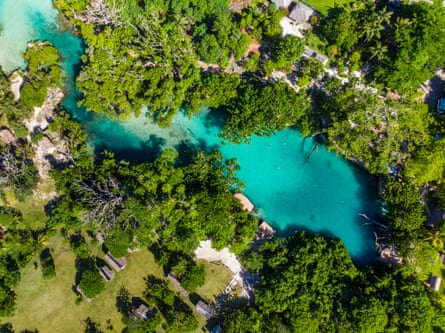
But in practice most of the frameworks and guidelines are not enforceable or widely monitored. Joseph Cheer, a professor of sustainable tourism and heritage at Western Sydney University in Australia, says frameworks set up “aspiration parameters” for the industry and compliance is voluntary.
“This is one of the biggest challenges in the Pacific,” Cheer says. “Whether a business decides to adhere to them is entirely up to them. There is no compulsion or penalty if you don’t follow them.”
While he cautions against generalising about the region, Cheer says there is a lack of data collected on sustainability measures and a poor track record on governance in the Pacific.
The Global Sustainable Tourism Council is a prominent organisation that sets standards and facilitates certification for destinations and businesses around the world – Singapore, Järvsö in Sweden and the Australian ski resort of Thredbo are among the places that have secured certification. No destinations in the Pacific have been certified, though some have adopted its standards.
One of those is Fiji, the most-visited country in the Pacific with more than 636,000 arrivals in 2022. It adopted GSTC standards as nationwide guidelines this year. Fiji Tourism’s chief executive, Brent Hill, acknowledges they are being rolled out slowly and remain optional. The sector contributes nearly 40% of Fiji’s GDP and the government is developing a national sustainable tourism framework, which will include similar opt-in standards.
Vanuatu, which before the Covid pandemic saw tourism contribute roughly 36% of GDP , was among the first Pacific nations to adopt an official sustainable tourism strategy. The country, along with the Cook Islands, provides optional eco and sustainable tourism certifications for businesses. Vanuatu hopes to secure GSTC certification and wants 60% of tourism businesses certified by local authorities by 2025.
Still, Stephen Pratt, the department chair of tourism, events and attractions at the University of Central Florida, says across the Pacific there has been “very little regulation or self-regulation from the private sector” on sustainable tourism. That’s largely due to governments lacking resources, the “tyranny of distance” and the difficulty of monitoring remote places.
New tourism models
As standards and “green” certification systems emerge, countries are trying to attract tourists with a focus on the environment and culture.
French Polynesia, a territory that includes Tahiti, markets its more than 100 islands as “slow tourism ” destinations. Slow tourism advocates spending longer in a single place, favouring transport such as hiking or cycling. It also promotes cultural experiences, for example, a visit to a taro plantation, where tourists are shown how to harvest and cook the edible root.

Other countries are exploring “regenerative” tourism, which calls for visitors to leave a positive impact. They may help restore a coral reef, stay at locally run guesthouses or eat locally grown food.
“More tourist dollars stay in the country and visitors have more authentic, meaningful experiences,” says Spooner, who now runs the Vanuatu not-for-profit Regenerative Vanua.
He says agri-tourism – where farming is integrated with tourist experiences – turns traditional practices “into a story” and benefits communities.
“Visitors showing excitement in the traditional food experience contributes to the reviving of pride in local food systems and in turn discourages the reliance of unhealthy imported foods that is a major health issue in Pacific Island countries.”
Cook Islands’ five-year tourism strategy, launched in 2022, includes attracting “responsible” travellers by marketing regenerative experiences , as well as a focus on culture and traditions. Visitors are encouraged to eat local instead of imported food at restaurants, and support certified “mana tiaki” (guardianship) businesses. Mana tiaki is a free certification system for businesses that meet sustainability and environmental care standards.
Elsewhere in the region, New Caledonia says sustainability is one of its core tourism values. Samoa’s tourism development plan includes an aim to become a more “resilient, inclusive and green tourism destination”.

Pratt says while the niche tourism segments are important “they are never going to get the volume of tourists – at least as before Covid”.
But Dr Susanne Becken, a professor of sustainable tourism at Griffith University, notes that while small, locally owned businesses may attract fewer visitors than a mass tourism model, “that doesn’t necessarily mean the benefit for local people is lower.”
Becken says voluntary schemes, such as mana tiaki or the Palau pledge are useful but “ideally such soft measures are complemented by legislation and standards, for example on phasing out single use plastic, supported through the Pacific Ocean Litter Project”.
A clearer picture of the impact of tourism would help guide policymaking. Becken says there is a lack of data on the carbon footprint and environmental toll of tourism in the Pacific, though the SPTO is working in this area.

Given their remote locations, reducing the emissions of transport – by air or sea – remains the among Pacific nation’s biggest environmental challenges. Travel and tourism accounts for as much as 11% of global greenhouse gas emissions, according to a 2021 World Travel and Tourism Council report .
The SPTO chief executive, Christopher Cocker, says while the contribution of the Pacific islands to global emissions is insignificant, becoming a “green industry is reliant on the transformation of the transportation sector”.
Tourists driving change
Despite the growing focus on sustainability, the prominent Samoan climate change activist Brianna Fruean says the region needs to “reshape” its relationship with tourism.
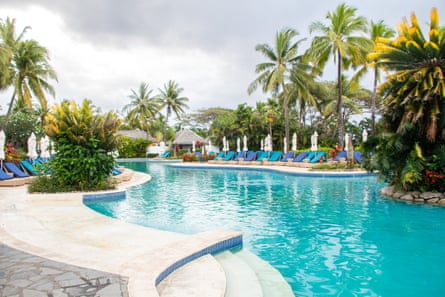
“Tourists aren’t just allowed to come to our Pacific Islands and it’s a free for all … we are the guardians of our islands, and when we have you as guests on our islands, you have to be guardians as well, you have to be a good guest.”
Richard Markham, a member of Fiji’s Duavata collective, agrees visitors need to take some responsibility for their impact. Markham says travellers who want a “green holiday” need to do their research.
“Where these are not regulated, responsibility lies with the consumer to identify products that are most sustainable,” he says, while acknowledging “the risk of greenwashing and lack of transparency can make this difficult”.
Markham says tourists should try to “book with businesses that are locally owned and operators who express their concerns through real engagement with local communities and the environment.”
“Visitors can show that they truly care and will not be fooled by ‘green washing’ – and that may encourage the industry to make substantive changes,” he says.
- The price of paradise?
- Pacific islands
- French Polynesia
- Cook Islands
- New Caledonia
Most viewed
Pacific Tourism Organisation
Description, similar organizations.
Established in 1983 as the Tourism Council of the South Pacific, the Pacific Tourism Organisation (SPTO) is the mandated organisation representing Tourism in the region.
Its 21 Government members are American Samoa, Cook Islands, Federated States of Micronesia, Fiji, French Polynesia, Kiribati, Nauru, New Caledonia, Niue, Republic of Marshall Islands, Papua New Guinea, Samoa, Solomon Islands, Timor Leste, Tokelau, Tonga, Tuvalu, Vanuatu, Wallis & Futuna, Rapa Nui and the People’s Republic of China. In addition to government members, the Pacific Tourism Organisation has about 200 private sector members
“Sustainable tourism development through innovative partnerships”
Linked to this, SPTO’s goals are:
- To improve air and sea access to Islands
- To Enhance brand “Pacific”
- To develop capacity of Government and private sector for sustainable tourism
“Our Pacific Islands’ empowered and benefitting from sustainable tourism”
- About South-South Galaxy
- Terms of Use
- Programmes Consumer Information for SCP Sustainable Buildings and Construction Sustainable Food Systems Sustainable Lifestyles & Education Sustainable Public Procurement Sustainable Tourism
- Network Members Directory Organisations
Share your contribution to SDG12 and sustainable consumption and production
Pacific tourism organisation, role in programme(s):, commitments:, select a language.

- GSTC Mission & Impacts
- GSTC History
- Market Access Program
- GSTC Board of Directors
- Assurance Panel
- Working Groups
- GSTC Sponsors
- GSTC Members
- Recruitment
- Contact GSTC
- GSTC For the Press
- Criteria Development, Feedback & Revisions
- Sustainable Tourism Glossary
- SDGs and GSTC Criteria
- GSTC Industry Criteria
- GSTC Destination Criteria
- GSTC MICE Criteria
- Criteria Translations
- GSTC-Recognized Standards for Hotels
- GSTC-Recognized Standards for Tour Operators
- GSTC-Recognized Standards for Destinations
- Recognition of Standards (for Standard Owners)
- GSTC-Committed
- Certification for Hotels
- Certification for Tour Operator
- Certification for Destination
- Accreditation for Certification Bodies
- Accredited Certification Bodies
- Stakeholder Consultations
- What is Certification? Accreditation? Recognition?
- Sustainable Tourism Training Program (STTP)
- Upcoming Courses
- Professional Certificate in Sustainable Tourism
- Professional Certificate in Sustainable Business Travel
- GSTC Trainers and Partners
- FAQs: GSTC Training Program
- Organization Membership Application
- Destination Membership Application
- Membership Policy
- Membership Categories & Fees
- Membership Payment Options
- Webinars for GSTC Members
- Members Log In
- Upcoming Webinars
- GSTC2024 Sweden, Apr 23-26
- GSTC2024 Singapore, Nov 13-16
- Past Conferences
- Destination Stewardship Report
Pacific Tourism Organisation (SPTO), Pacific Sustainable Tourism Policy Framework (PSTPF), and the GSTC
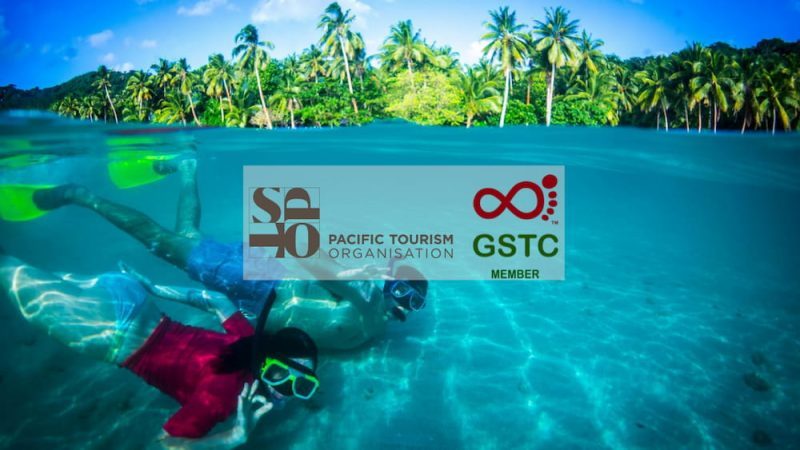
The Pacific Sustainable Tourism Policy Framework (PSTPF)
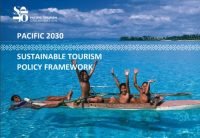
Pacific Tourism Organisation (SPTO) Membership in the GSTC
SPTO’s membership in the GSTC will complement the work of the organization in moving forward particularly in relation to the newly developed Pacific Sustainable Tourism Policy Framework and the Pacific Tourism Statistics Strategy .
“GSTC membership is important for SPTO as we continue to look ahead to post- pandemic tourism and how we would like for that to look”, said SPTO CEO, Christopher Cocker.
“If this pandemic has taught us anything it is that we cannot simply revert to the way things were. We must build a resilient tourism industry and in order to do that, we must develop and maintain sustainable practices. GSTC membership will add value to SPTO’s membership and regional recovery efforts post COVID-19”, he said.
Last year SPTO’s Sustainable Tourism & Research Division provided financial support to representatives from the national tourism offices of the Cook Islands, Solomon Islands, Kiribati, Vanuatu and the Republic of the Marshall Islands to undertake a month-long training offered by the GSTC . The training offered practical insights and effective steps to improving sustainability practices and enabled participants to develop viable and actionable sustainable tourism policies and practices at both the national and organisational levels. As part of the partnership, SPTO will continue to pursue further training for its Member Countries.
Pacific Tourism Leaders Commit To Sustainable Tourism Transformation
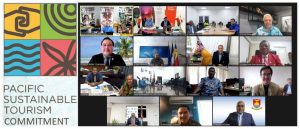
On November 3rd 2021, tourism ministers from across the Pacific have endorsed the Pacific Sustainable Tourism Policy Framework (PSTPF), committing their long-term support to rebuild and transform Pacific tourism so that it is resilient, prosperous, and more inclusive.
Supported by 20 countries in the region, this signals the ambition of Pacific leaders to use tourism to support the wellbeing of Pacific people and their island and ocean resources and ecosystems.
The PSTPF recognizes that tourism has the potential to bring about positive change to the lives of Pacific people and the quality of their environment so that it can be enjoyed by generations to come. It acknowledges tourism as an avenue to rebuild economies, provide decent work opportunities, reduce poverty, enhance social inclusion, and protect natural and cultural assets.
In that regard, SPTO CEO, Mr. Christopher Cocker, noted the importance of leaders’ recognition of tourism as a force for positive change. “We see tourism as a Vaka, the vessel we use to navigate towards greater sustainability and the resilience of our people, our islands, and our ocean,” he said.
“Our shared vision is that by 2030 we are empowered by, and benefitting from tourism that is resilient, prosperous and inclusive and certainly with COP26 currently underway, this commitment couldn’t have come at a better time. Through the PSTPF, SPTO and its membership are showing the world that the Pacific region is standing up and taking action to transform tourism in our region”, said Mr. Cocker.
Whilst discussing the Framework at SPTO’s Council of Tourism Ministers meeting, the Council acknowledged that responsibility for implementation of the Framework will be a joint effort, requiring a partnership between governments, industries, civil society organisations, development partners, and the community.
Moreover, it was noted that implementing the policies and actions within this Framework will enable the SPTO and its partners to contribute to the 2030 Agenda and the Sustainable Development Goals as well as other global, regional, and national commitments.
Join the Webinar for GSTC Members About the Pacific Sustainable Tourism Policy Framework on November 17th, 2021
November 17th, 2021 | 7:00 CET | 14:00 TH | 16:00 JP/KR | 20:00 FJ
Presenters:
- Christina Leala Gale, Sustainable Tourism and Research Manager, Pacific Tourism Organisation (SPTO)
- Penny Spoelder, Senior Associate, TRC Tourism
The Pacific Sustainable Tourism Policy Framework reflects the aspirations of the SPTO and its members, the tourism industry, civil society organisations, regional organisations and global development partners. The shared vision is: By 2030 we are empowered by, and benefitting from tourism that is resilient, prosperous and inclusive. It improves the wellbeing of our communities and protects, restores and promotes our cultures, islands and ocean ecosystems. To ensure that tourism in the Pacific continues to be a driver of economic and community wellbeing, all partners are required to implement the policies and actions in the Framework to build a resilient tourism industry, fit for the challenges and opportunities the Pacific faces between now and 2030.
Share This Story, Choose Your Platform!
Related posts.
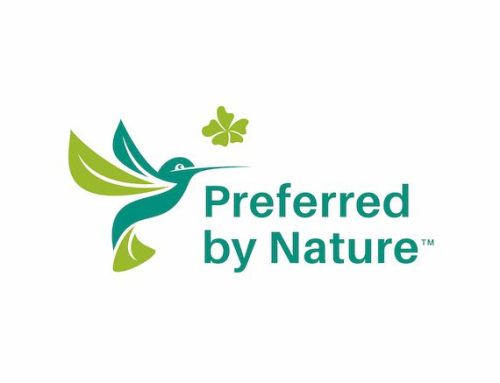
Preferred by Nature Standard gains GSTC-Recognized Standard Status
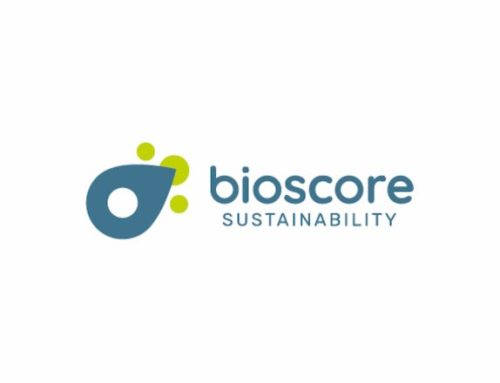
Bioscore Standard gains GSTC-Recognized Standard Status

Tokyo Convention & Visitors Bureau Joins GSTC
Tourism ‘intrinsically susceptible’ to climate shocks, political unrest, pandemic threat

Facebook Twitter Print Email
The President of the UN General Assembly on Tuesday highlighted the urgent need to boost sustainable and resilient tourism practices to protect the environment while continuing to benefit local economies.
Addressing a high-level meeting on tourism as part of the General Assembly’s first ever Sustainability Week , Dennis Francis said it was a vital driver of economic growth and empowerment .
In 2023, the sector contributed three per cent to the global gross domestic product (GDP), amounting to $3.3 trillion, and employed one in every ten people worldwide. For countries in special situations, like small island nations, tourism accounted for nearly 35 per cent of all export earnings and up to 80 per cent of national exports .
“Despite the spectacular benefits reaped across its vast supply chains – tourism is also intrinsically susceptible to a host of disruptive forces – such as climate change, pandemics, acts of terrorism, and domestic political instability,” Mr. Francis said.
Sustainable
He expressed concerns about the sector’s environmental and carbon footprint, saying sustainability must be paramount.
“We need a global tourism sector that is sustainable – one with deep local value chains that expand demand for locally made products and services in ways that also directly and positively benefit local communities,” he urged.
Moreover, he emphasized that the sector should also leverage digital technology to foster innovation and expand opportunities for jobs and economic growth, especially for women, youth, and indigenous and local communities.
“We also need a global tourism sector that is resilient,” said Mr. Francis, stressing the need to minimize its vulnerabilities and bolstering its ability to withstand external shocks.
This includes designing infrastructures that can withstand environmental disasters, fostering innovations that enhance economic and social resilience, and diversifying tourism activities to reduce recovery time after disruptive events.
Symbol of hope
Zurab Pololikashvili, head of the UN World Tourism Organization ( UNWTO ), also spoke at the General Assembly, noting that despite today’s pressing challenges, tourism offered a glimmer of hope.
Reflecting on the sector’s recovery from the COVID-19 pandemic – its most significant crisis in history – he observed that in 2023, international arrivals rebounded to almost 90 per cent of pre-pandemic levels , with full recovery expected by the end of 2024.
This recovery must serve as a catalyst for bold action and transformative change, he said, emphasizing, “tourism can – and must – be a part of this plan for a better future for all.”
Sustainability Week
The high-level event on tourism followed Monday’s deliberations on debt sustainability , where speakers outlined the crippling impact of debt on developing economies, and called for urgent reform of the global financial system.
Upcoming highlights of the week include dedicated discussions on sustainable transport, infrastructure and energy.
- General Assembly
- 2030 Agenda for Sustainable Development

Pacific Sustainable Tourism Policy Framework
By 2030 we are empowered by and benefit from tourism that is resilient, prosperous, and inclusive. It improves the wellbeing of our communities and protects, restores, and promotes our cultures, islands, and ocean ecosystems.
Tourism is an economic powerhouse and one of the main pillars sustaining growth and development in the Pacific. It is the major driver of economic growth, foreign exchange earnings, and employment and contributes to the achievement of the Sustainable Development Goals across the region. This potential can only be realised by transforming to a model of tourism that is prosperous, inclusive, and resilient and supports sustainable recovery from the COVID-19 pandemic and other natural disasters. The transformation to a better tourism future begins with the implementation of the Pacific Sustainable Tourism Policy Framework. The Pacific Sustainable Tourism Policy Framework reflects the aspirations of the SPTO and its members, the tourism industry, civil society organisations, regional organisations, and global development partners.
The Framework calls on all partners and stakeholders to coordinate and collaborate to advance this vision for sustainable tourism through a series of policies and actions that focus on:
- Supporting Prosperous and Resilient Economies
- Empowering Communities
- Amplifying and Promoting Culture
- Accelerating Climate Action
- Protecting Ecosystems
- Building resilience
The Framework has been designed to cater to countries that are well advanced in developing and implementing sustainable tourism practices as well as for the countries that are in the early stages of sustainable tourism development. To ensure that tourism in the Pacific continues to be a driver of economic and community wellbeing, all partners are required to implement the policies and actions in the Framework to build a resilient tourism industry, fit for the challenges and opportunities the Pacific faces between now and 2030.


Pacific Sustainable Tourism
Countries that have committed to sustainable tourism.

Goal 1 – Prosperous Economies
Tourism Supports Prosperous and Resilient Economies
Goal 2 – Thriving and Inclusive Communities
Tourism Supports the empowerment and wellbeing of our communities
Goal 3 – Visible and Valued Cultures
Tourism amplifies and promotes our culture and heritage
Goal 4 – Healthy Islands and Oceans
Tourism accelerates climate action, protects our ecosystems and support resilience
Statement of Commitment – Sustainable Tourism in the Pacific by 2030
The Pacific Leader’s Sustainable Tourism Commitment is inspired by the Pacific nations, industry, Civil Society, Development Partners, and Global Agencies who are committed to advancing sustainable tourism across the Pacific by 2030. Pacific values and practices have ensured the sustainability of natural resources for hundreds of years and will continue for generations to come. We want to instill these philosophies into the way we plan for, develop and manage tourism operations in order to preserve the future of our destinations.
We, the Council of Tourism Ministers representing the 20 member countries of the Pacific Tourism Organisation (SPTO) commit to elevating sustainable tourism as a regional priority for environmental, socio-cultural, and economic development. We commit to making tourism in the Pacific a force for good by adopting the Sustainable Tourism Policy Framework to put the sector and our communities on a path to sustainable recovery by 2030. Strategic regional cooperation and coordination is critical but to be most effective we must demonstrate leadership at the national level.
Tourism by its nature involves a destination as a whole, not only industry businesses, but also its ecosystems, natural resources, cultural assets and traditions, communities, aesthetics, and built infrastructure. Our approach must be integrated. We will work with our development partners and international financial institutions to build understanding about the need to obtain sustainable and green financing mechanisms to support sustainable tourism development and to provide accessible funding for small to medium enterprises. As we journey together on the road to tourism recovery following the COVID–19 pandemic, we will ensure that tourism brings positive change to the lives of our people and the quality of our environment so that it can be enjoyed by generations to come. We will work together to rebuild our economies, provide decent work opportunities, reduce poverty, enhance social inclusion, and protect our natural and cultural assets. Through our work and our partnerships, our goal is to make our tourism sector resilient, prosperous, and inclusive. The Pacific Sustainable Tourism Development Framework encompasses our vision and the policies and actions to support it. It provides a pathway for the tourism sector to play its part in support of the Pacific’s global, regional and national commitments. Our islands and oceans fundamentally underpin the health, wellbeing and prosperity of Pacific peoples and are the foundation upon which tourism depends. We acknowledge the interdependent crises of biodiversity loss, ecosystem degradation and climate change combined with the health and economic crises that impact every corner of the globe. Transformative change is needed: we cannot simply carry on as before. For tourism to be resilient, prosperous, and inclusive, we need to ensure:
- We are united as a region and work together to advance sustainable tourism through partnerships and collaboration
- We prioritise green investments to support tourism growth and work with our partners to mobilise resources
- We offer our visitors high quality, authentic, accessible and sustainable experiences that reflect our own country’s uniqueness
- We create enabling legislation and policies for tourism businesses to adopt sustainable tourism practices
- Our communities are empowered by tourism and benefit from it. We protect the vulnerable and provide opportunities for young people and women
- Together we build resilience to climate change and transition to a low emission, resource efficient sector.
We invite visitors and our partners to contribute to our efforts to make tourism to the Pacific more sustainable. In endorsing this Pacific Leader’s Sustainable Tourism Commitment, we commit ourselves to these goals and meaningful actions. It marks a turning point and comes with an explicit recognition that we will be judged now and by future generations on our willingness and ability to achieve our goals. Tourism has the potential to bring about positive change to the lives of our people and the quality of our environment that will be enjoyed by generations to come. We now call on our development partners, national Government colleagues, international financial institutions, regional and international agencies to support us as we transition toward sustainable tourism. We commit to meeting annually to review our progress and reaffirm these commitments.
UN Tourism | Bringing the world closer

share this content
- Share this article on facebook
- Share this article on twitter
- Share this article on linkedin
UN General Assembly Hosts Tourism for Sustainable Development Event
- All Regions
- 17 Apr 2024
The United Nations General Assembly has held a second thematic event focused on tourism and the sector’s critical role in critical role of tourism in advancing sustainable development and resilience.
Organized by the President of the General Assembly in collaboration with UN Tourism , the event was held at the UN Headquarters within the framework of Sustainability Week. The presence of Member States, Observers, civil society organizations, and UN agencies reflected a growing collective commitment to harnessing the transformative power of tourism for inclusive and sustainable development .
The growing significance of the tourism sector for our societies and our economies brings with it extra responsibility. We cannot allow the lifeline of tourism to be cut again. Resilience in the tourism is not just a matter of planning or reacting to crises.
Addressing the General Assembly, UN Tourism Secretary-General Zurab Pololikashvili said: “The growing significance of the tourism sector for our societies and our economies brings with it extra responsibility. We cannot allow the lifeline of tourism to be cut again. Resilience in the tourism is not just a matter of planning or reacting to crises. It is also about proactively addressing the underlying factors of those crises. Unsustainable consumption is leading to biodiversity loss, climate change and the emergence of pandemics. It's vital that we adopt policies that accelerate transformative change.”
The President of the General Assembly, His Excellency Dennis Francis, said: "We need a global tourism sector that is sustainable – one with deep local value chains that expand demand for locally made products and services in ways that also directly and positively benefit local communities; a sector that serves as a positive force for biodiversity conservation, heritage protection and climate friendly livelihoods."
High-level platform for statistics-led strategy
The thematic event provided a platform for Member States to share best practices, strategies, and innovative approaches to promote sustainable and resilient tourism, aligned with the Sustainable Development Goals (SDGs). Key highlights included:
- Fireside Chat: The Future of Tourism - Leaders from the tourism industry, academia, and civil society engaged in a dynamic discussion on the future of tourism and the need for innovative solutions to address emerging challenges and opportunities.
- Ministerial Roundtables : Discussions were held on the launch of the Statistical Framework for Measuring the Sustainability of Tourism and strategies for fostering resilient tourism in the face of global challenges. Ministers and high-level officials shared insights and commitments to advance sustainable tourism practices and policies.
In closing, the President of the General Assembly reiterated the importance of collaboration and partnership to address the complex challenges facing the tourism sector and reaffirmed the UN's commitment to supporting sustainable tourism as a catalyst for positive change.
In February, the UN General Assembly adopted a Resolution to declare 2027 as the International Year of Sustainable and Resilient Tourism . The resolution invites UN Tourism to work with Governments, UN agencies and international organizations to on the implementation of the themed year.

New York, U.S.A.
Credit un photo/loey felipe.

Related links:
- Download News Release on PDF
- Measuring the Sustainability of Tourism (MST)
- Sustainable tourism development
- Video: High-Level Thematic Event on Tourism - General Assembly
- Tourism 4SDGs
Related Content

UN Tourism International Forum – Quintana Roo “Tourism ...

UN Tourism and Hotelschool The Hague to Drive Innovatio...

European Committee of the Regions and UN Tourism break ...

UN Tourism and Croatia to Establish Research Centre for...
Pacific cities much older than previously thought
New evidence of one of the first cities in the Pacific shows they were established much earlier than previously thought, according to new research from The Australian National University (ANU).
The study used aerial laser scanning to map archaeological sites on the island of Tongatapu in Tonga.
Lead author, PhD scholar Phillip Parton, said the new timeline also indicates that urbanisation in the Pacific was an indigenous innovation that developed before Western influence.
"Earth structures were being constructed in Tongatapu around AD 300. This is 700 years earlier than previously thought," Mr Parton said.
"As settlements grew, they had to come up with new ways of supporting that growing population. This kind of set-up -- what we call low density urbanisation -- sets in motion huge social and economic change. People are interacting more and doing different kinds of work."
Mr Parton said traditionally, studying urbanisation in the Pacific has been tricky due to challenges collecting data, but new technology has changed that.
"We were able to combine high-tech mapping and archaeological fieldwork to understand what was happening in Tongatapu," he said.
"Having this type of information really adds to our understanding of early Pacific societies.
"Urbanisation is not an area that had been investigated much until now. When people think of early cities they usually think of traditional old European cities with compact housing and windy cobblestone streets. This is a very different kind of city.
"But it shows the contribution of the Pacific to urban science. We can see clues that Tongatapu's influence spread across the southwest Pacific Ocean between the 13th and 19th centuries."
According to Mr Parton, the collapse of this kind of low-density urbanisation in Tonga was largely due to the arrival of Europeans.
"It didn't collapse because the system was flawed; it was more to do with the arrival of Europeans and introduced diseases," he said.
"This is just the beginning in terms of early Pacific settlements. There's likely still much to be discovered."
The study has been published in the Journal of Archaeological Method and Theory.
- Earth Science
- Ancient Civilizations
- Lost Treasures
- Anthropology
- Chichen Itza
- Alpine Fault
- Archaeology
- Aerial photography
- Confocal laser scanning microscopy
- The Genographic Project
- Artifact (archaeology)
Story Source:
Materials provided by Australian National University . Note: Content may be edited for style and length.
Related Multimedia :
- Urban area at Mu‘a
Journal Reference :
- Phillip Parton, Geoffrey Clark. Low-Density Urbanisation: Prestate Settlement Growth in a Pacific Society . Journal of Archaeological Method and Theory , 2024; DOI: 10.1007/s10816-024-09647-8
Cite This Page :
Explore More
- Warming Antarctic Deep-Sea and Sea Level Rise
- Octopus Inspires New Suction Mechanism for ...
- Cities Sinking: Urban Populations at Risk
- Puzzle Solved About Ancient Galaxy
- How 3D Printers Can Give Robots a Soft Touch
- Combo of Multiple Health Stressors Harming Bees
- Methane Emission On a Cold Brown Dwarf
- Remarkable Memories of Mountain Chickadees
- Predicting Future Marine Extinctions
- Drain On Economy Due to Climate Change
Trending Topics
Strange & offbeat.

IMAGES
VIDEO
COMMENTS
Pacific Tourism Organisation. SPTO was established in 1983 as the Tourism Council of the South Pacific, the Pacific Tourism Organisation (SPTO) is the mandated organisation representing Tourism in the region. SPTO believes in a sustainable future for our Pacific Islands through tourism to benefit our people, safeguard our cultural heritage, and ...
The Pacific Tourism Organisation (SPTO) formerly known as the South Pacific Tourism Organisation is an intergovernmental organisation for the tourism sector in the South Pacific.The SPTO markets, promotes, and develops tourism in the Pacific in overseas markets. The main office is located in Suva, Fiji.. Originally, the organisation was funded by the European Union as a form of development aid.
Established in 1983 as the Tourism Council of the South Pacific, the Pacific Tourism Organisation (SPTO) is the mandated organisation representing Tourism in the region. Its 21 Government members are American Samoa, Cook Islands, Federated States of Micronesia, Fiji, French Polynesia, Kiribati, Nauru, Marshall Islands, New Caledonia, Niue ...
Established in 1983 as the Tourism Council of the South Pacific, the Pacific Tourism Organisation (SPTO) is the mandated organisation representing Tourism in the Pacific, with 21 Government ...
Pacific Tourism Organisation, Suva, Fiji. 101,587 likes · 568 talking about this · 9 were here. Pacific Tourism Organisation (SPTO) is the mandated organisation representing Tourism in the Pacific.
The Pacific is paving the way for the development of the regions first UNESCO Global Geoparks under the new Memorandum of Understanding signed by the Pacific Community (SPC) and the Pacific Tourism Organisation (SPTO). The new agreement will provide the opportunity to assign designated sites that focus on unique natural environments and cultural heritage, as well as boost partnership ...
The Pacific Tourism Organisation (SPTO) was established in 1983 as the Tourism Council of the South Pacific and is based in Suva, Fiji. It has the following 20 Pacific Island government members: American Samoa, Cook Islands, Federated States of Micronesia, Fiji, French Polynesia, Kiribati, Nauru, Marshall Islands, New Caledonia, Niue, Papua New ...
The "Discover the Pacific" channel is all about helping you discover more about the beautiful Pacific Islands. This channel is managed by the Pacific Tourism Organisation (SPTO).
The Pacific Tourism Organisation (SPTO), the region's leading industry group with 21 member countries, has developed a sustainable tourism framework and destination standards. They contain wide ...
Established in 1983 as the Tourism Council of the South Pacific, the Pacific Tourism Organisation (SPTO) is the mandated organisation representing Tourism in the region. Its 21 Government members are American Samoa, Cook Islands, Federated States of Micronesia, Fiji, French Polynesia, Kiribati, Nauru, New Caledonia, Niue, Republic of Marshall ...
To support investment in sustainable tourism products in the Pacific. To support access improvements and expansion of Pacific air services. To contribute to the strengthening of tourism human resource development by improving its quality, access and coordination across the region. The Executive Office is responsible for the management of the ...
Tourism and the Pandemic All around the world, COVID-19 is having serious impacts on the tourism industry. The Pacific Island Countries and Territories (PICTs) are no exception. Read more: Visitor arrival numbers slump in the Pacific Island Countries and Territories. Displaying 1 - 1 of 1
Through a partnership with the Asia-Pacific Tourism Exchange Center (APTEC) and the Pacific Tourism Organization (SPTO), this year's tourism stories series is made available in both E-book and video format. It aims to showcase the efforts of local operators to lead tourism recovery at their own level, while providing a unique insight into ...
World Tourism Organization. UNWTO is proud to present 'UNWTO Tourism Stories for the Pacific, Resiliency Through Crisis', a project which illustrates the resilience of the travel and tourism sector in the face of crisis through the voices of the unique and resourceful Pacific Islands nations. As the world slowly begins to recover from the ...
The Pacific Tourism Organisation (SPTO) is inspired by our people and the leadership of our Council of Tourism Ministers, who had officially endorsed the Pacific Sustainable Tourism Policy Framework 2030 on 28 October 2021. It reaffirms our shared vision, that "By 2030 we are empowered by, and benefitting from tourism that is resilient ...
The Pacific Tourism Organisation (SPTO) received the Commonwealth Secretary-General's Innovation for Sustainable Development Awards 2023 in Nairobi, Kenya on Monday 27 November, for its project, the "Pacific Sustainable Tourism Policy Framework (PSTPF) 2030." SPTO's 20 Pacific Island member countries are committed to to sustainable tourism, its CEO Christopher Cocker said.
The Pacific Sustainable Tourism Framework (PSTPF) was developed by the Pacific Tourism Organisation (SPTO) on behalf of its members, including the governments of American Samoa, Cook Islands, Federated States of Micronesia, Fiji, French Polynesia, Kiribati, Nauru, Marshall Islands, New Caledonia, Niue, Papua New Guinea, Samoa, Solomon Islands, Timor Leste, Tokelau, Tonga, Tuvalu, Vanuatu ...
The Board of Directors consists of one representative from each of the 21 member governments, and 5 members representing the private sector. The Board meets a minimum of twice a year. Its main responsibilities include: approval and monitoring of SPTO's annual core and work plan budgets. approval and monitoring of operating policies and ...
The Pacific Sustainable Tourism Standard for Destinations and industry provides guidance to the SPTO and its member nations to work towards improved sustainability in tourism as required by the Pacific Sustainable Tourism Policy Framework (PSTPF). The need for a more sustainable form of tourism in the Pacific has been heightened by the COVID-19 ...
The report is designed to be an aid to decision-making by Pacific tourism sector organisations and businesses, to raise issues, to inform thinking, and to highlight future themes around Pacific regional cooperation for tourism's recovery from COVID-19. This report is phase 1B of 3 phases:
36th CAP-CSA and First UN Tourism Regional Forum on Gastronomy Tourism for Asia and the Pacific. Asia and the Pacific. International Accessible Tourism Forum - Asia & the Pacific. From Our Members. More From Our Members. Asia and the Pacific RDAP Dept. Ramadhan in Brunei Darussalam: A Fascinating Cultural Experience.
In 2023, the sector contributed three per cent to the global gross domestic product (GDP), amounting to $3.3 trillion, and employed one in every ten people worldwide. For countries in special situations, like small island nations, tourism accounted for nearly 35 per cent of all export earnings and up to 80 per cent of national exports ...
The Pacific Sustainable Tourism Policy Framework 2030 reflects the aspirations of the SPTO and its members, the tourism industry, civil society organisations, regional organisations and global development partners. The shared vision is "By 2030 we are empowered by, and benefit from tourism that is resilient, prosperous and inclusive.
The Pacific Sustainable Tourism Policy Framework reflects the aspirations of the SPTO and its members, the tourism industry, civil society organisations, regional organisations, and global development partners. The Framework calls on all partners and stakeholders to coordinate and collaborate to advance this vision for sustainable tourism ...
All Regions. 17 Apr 2024. The United Nations General Assembly has held a second thematic event focused on tourism and the sector's critical role in critical role of tourism in advancing sustainable development and resilience. Organized by the President of the General Assembly in collaboration with UN Tourism, the event was held at the UN ...
Low-Density Urbanisation: Prestate Settlement Growth in a Pacific Society. Journal of Archaeological Method and Theory , 2024; DOI: 10.1007/s10816-024-09647-8 Cite This Page :